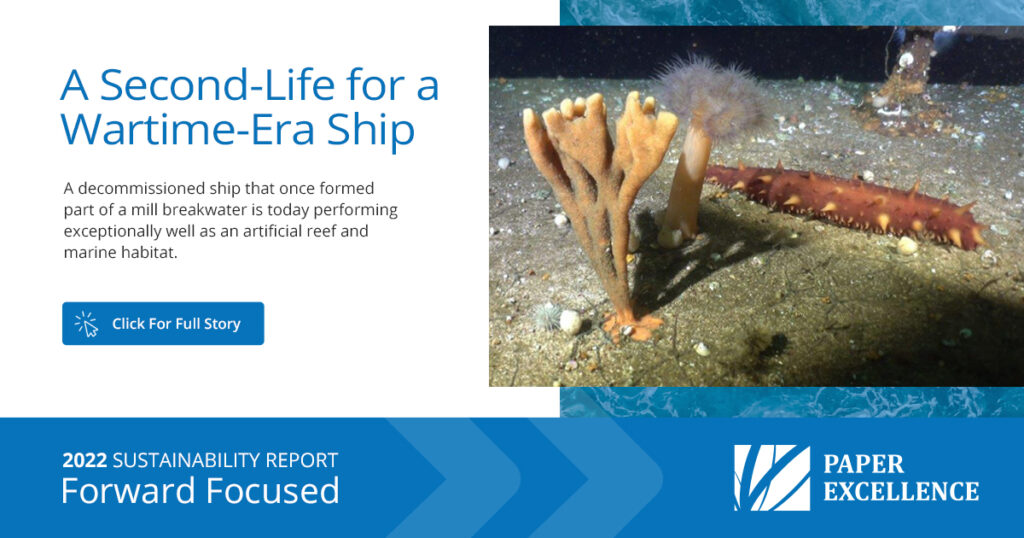
Ten WWI- and WW2-era ships – with the unusual distinction of being made from concrete – have long been a prominent feature of the Powell River waterfront, where these “hulks” provide a breakwater for both the site of the now-closed tiskwat mill and other marine shipping.
In June 2018, one of them – the YOGN-82, a former fuel barge – took on an important new role after it was cleaned to government standards and sunk to form an artificial reef. This is one of a number of such projects that the Artificial Reef Society of BC (ARSBC) has implemented. The porous concrete surfaces of this vessel have proven to be remarkably effective in enhancing habitat and biodiversity in an area with no natural reef structures.
ARSBC divers visited the YOGN-82’s seabed location in September 2022, along with a documentary film crew and after a hiatus in visits during the pandemic. They found robust populations of important juvenile fish species, living within and around the wreck site. The ship is intact and perfectly positioned to capture embryonic materials deposited by nutrient rich currents.
Artificial reefs are known to contribute to local economies, as a tourism draw for eco-adventure scuba divers, and even more so when the reef consists of an unusual historic vessel. Repurposing decommissioned ships in this way also reduces the environmental footprint of total scrapping. The habitat created includes various species of sea weeds and “filter feeders” that remove carbon through photosynthesis, another important environmental benefit.
